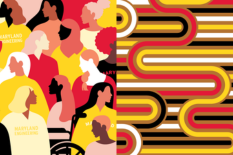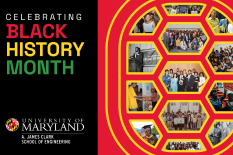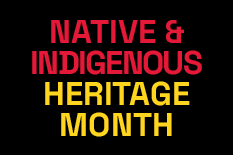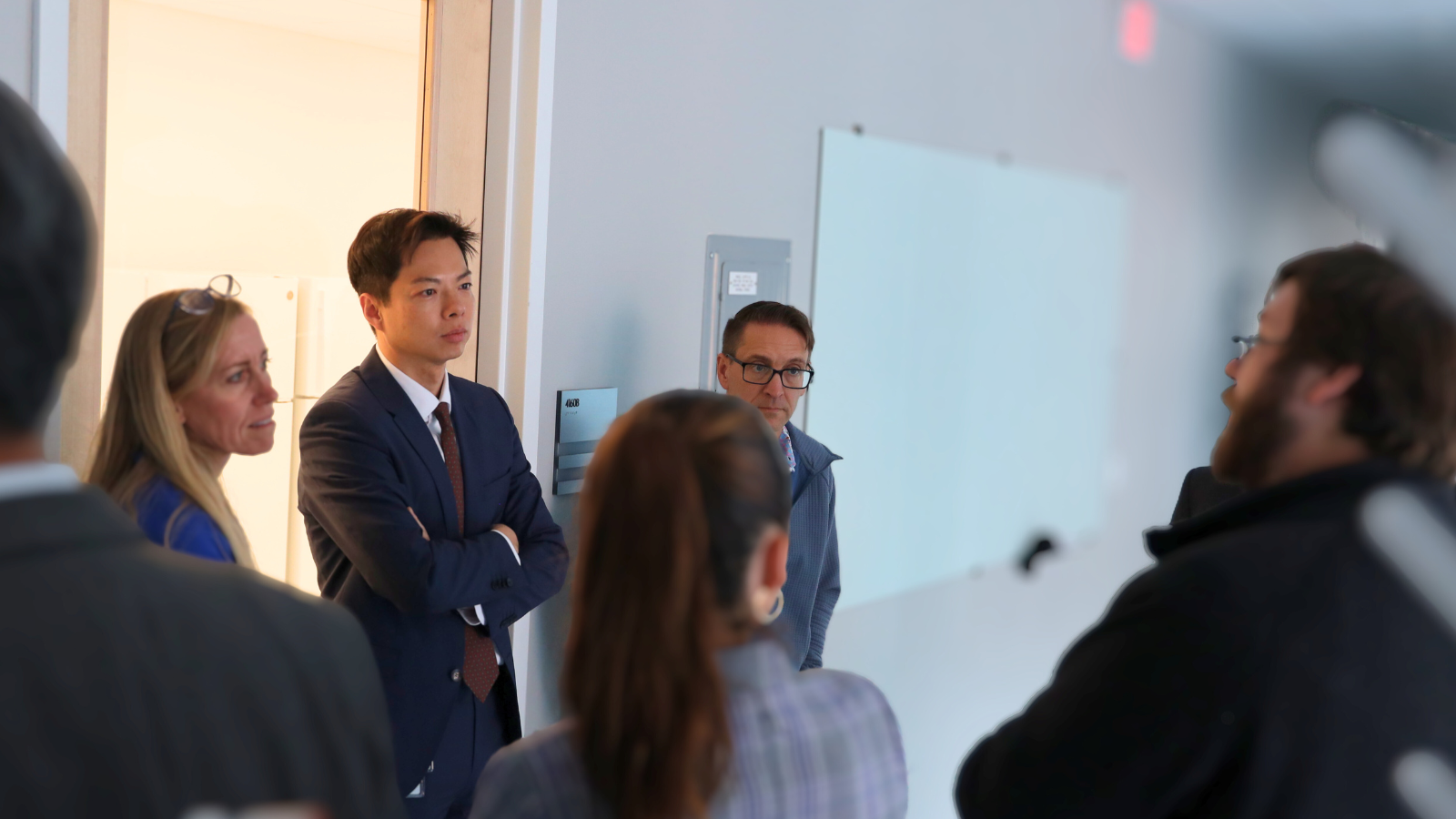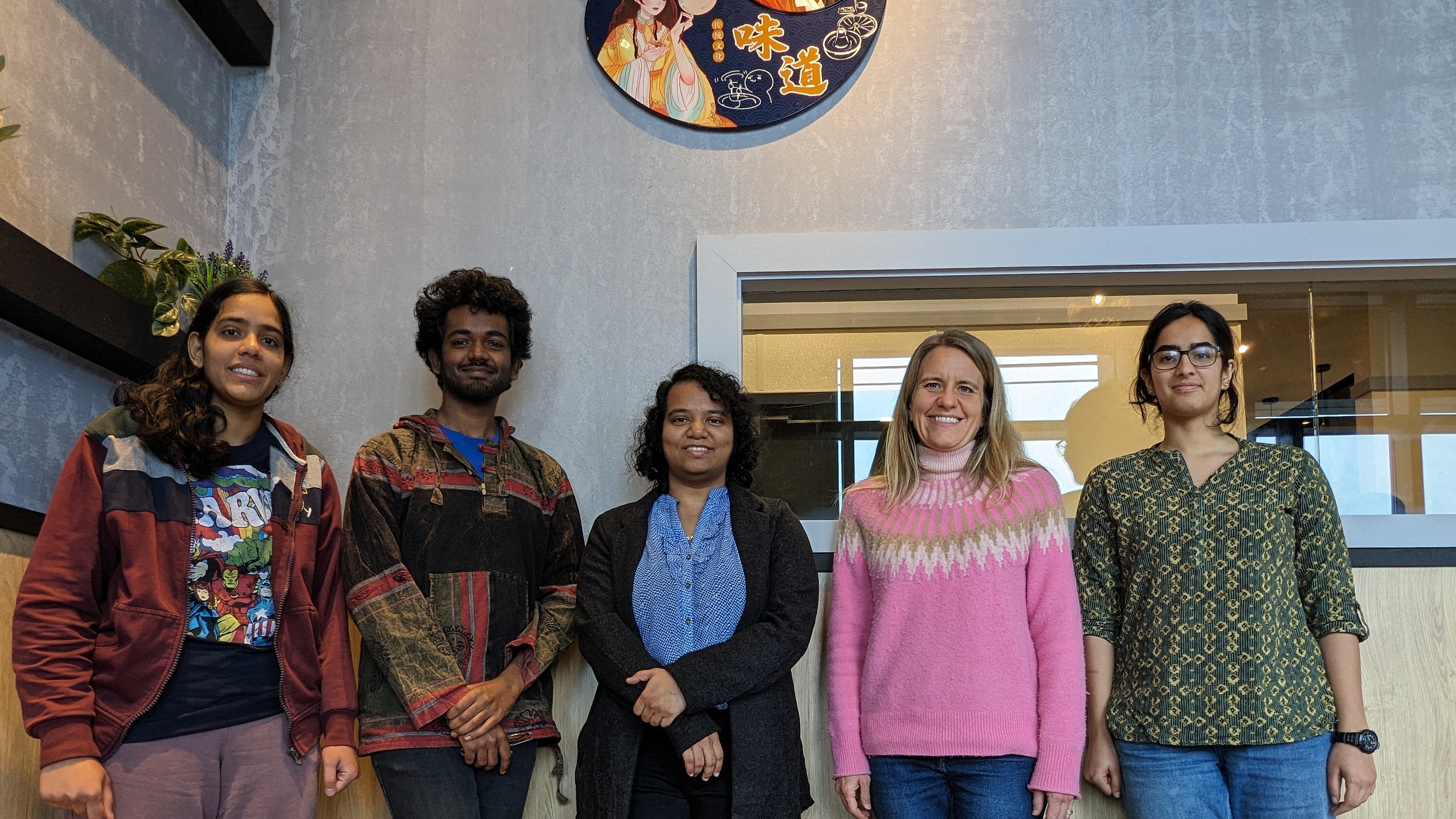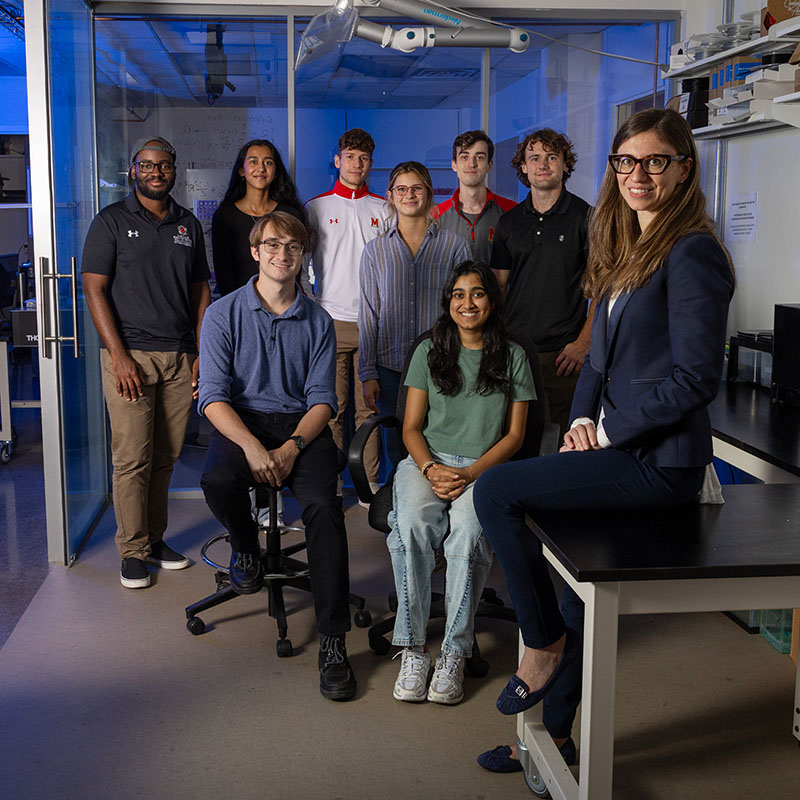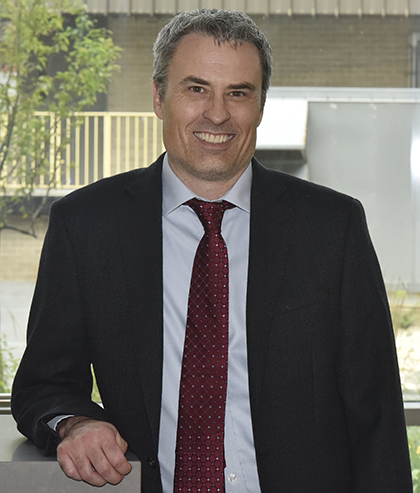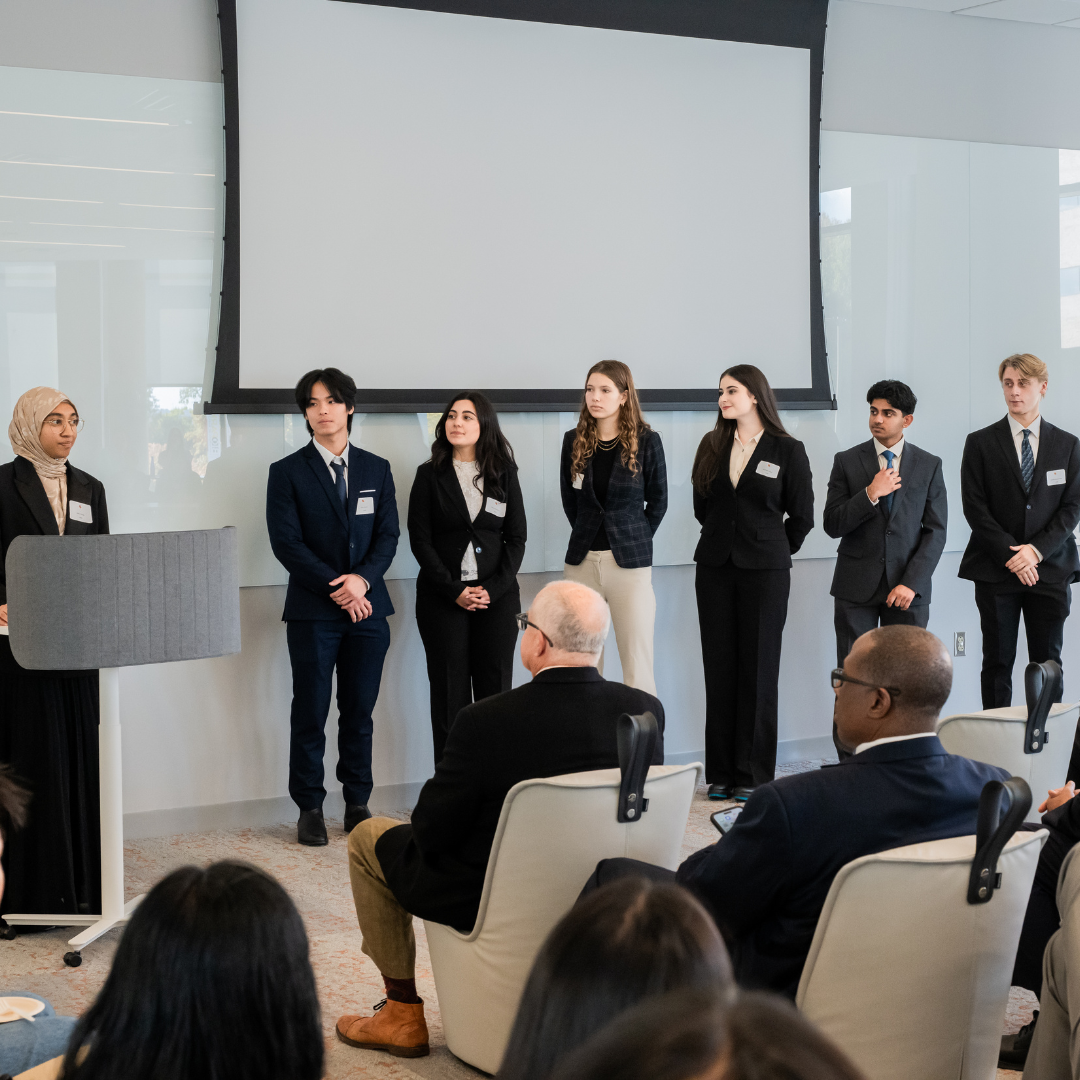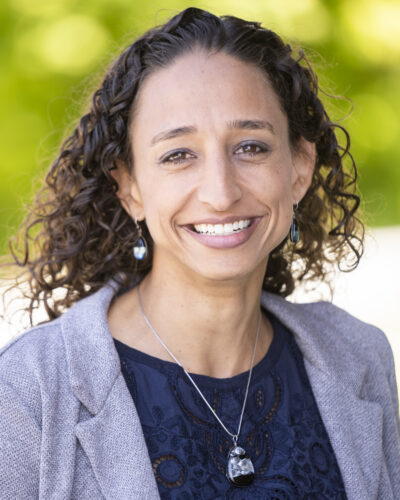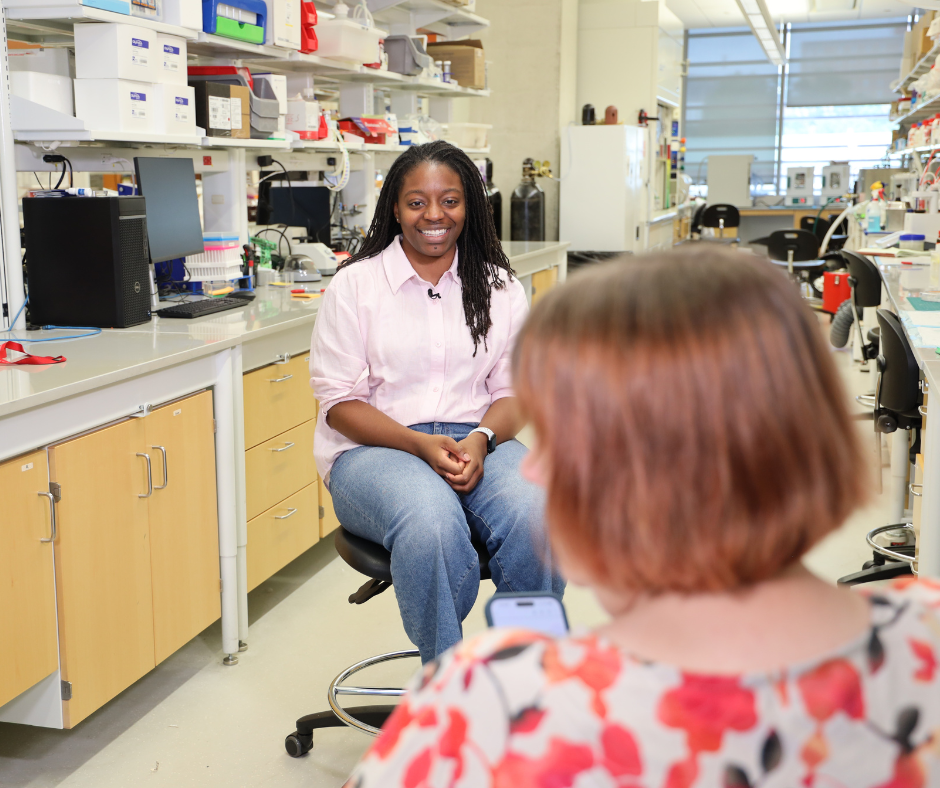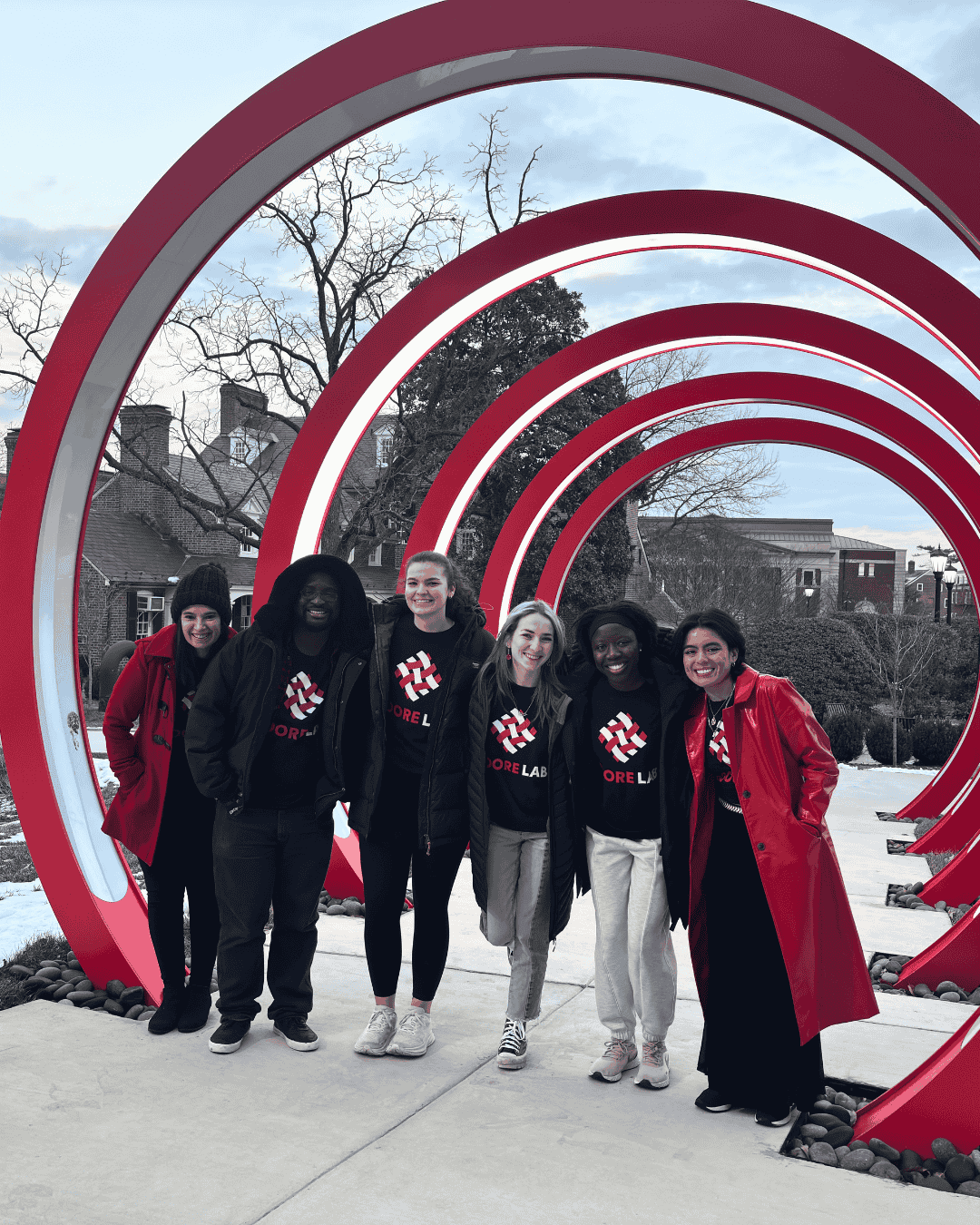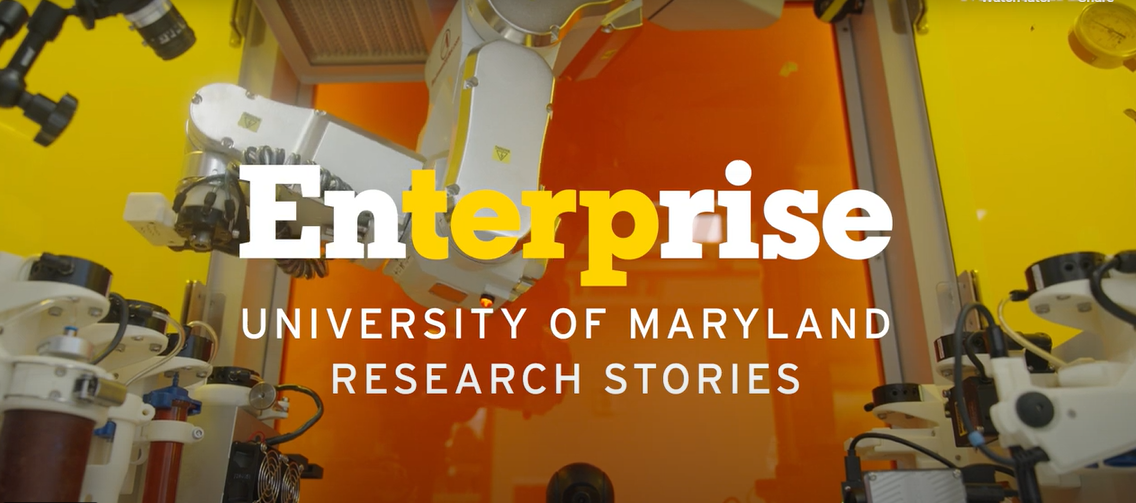News Story
Sueños Sin Fronteras: The Clark School Celebrates Latine Engineers
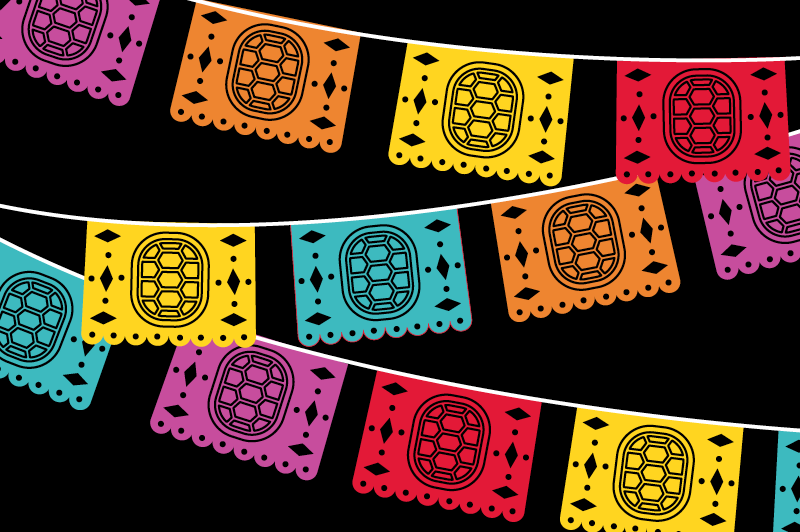
Working together, we can create and support a thriving community of engineers.
At the A. James Clark School of Engineering, we recognize and celebrate the different stories and contributions among our students, faculty, staff, and alums. Join us as we proudly celebrate Latine Heritage Month and these Terp engineers.
Read Dean Graham’s Latine Heritage Month message
Each year, the university’s Office of Multicultural Involvement and Community Advocacy (MICA) coordinates a calendar of events to commemorate national Latine Heritage Month (September 15–October 15). This year’s campus-wide theme is “Sueños Sin Fronteras,” Spanish for “Dreams Without Borders,” which calls us to reflect on the impact of immigration and on the sacrifices made by past generations to uplift and nurture future generations.
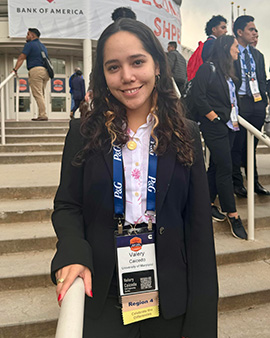 Having attended high school in Baltimore, UMD seemed like a natural fit for Valery Caicedo. From excellent engineering programs and career resources to enthusiastic mentors and “all the orgs,” she settled quickly into life as a civil engineering major. But Caicedo, whose parents are from Colombia, didn’t “build her community” until sophomore year, when she became involved with UMD’s chapter of the Society for Hispanic Professional Engineers (SHPE). Her dedication to the organization paid great dividends; she was chosen to attend the national SHPE convention, four days of social and professional networking. It’s where she landed a research project on e-bikes under Professor Cinzia Cirillo; it’s also where she secured her summer internship working as a general contractor for the Whiting-Turner Contracting Company, building a cancer center at Sinai Hospital of Baltimore.
Having attended high school in Baltimore, UMD seemed like a natural fit for Valery Caicedo. From excellent engineering programs and career resources to enthusiastic mentors and “all the orgs,” she settled quickly into life as a civil engineering major. But Caicedo, whose parents are from Colombia, didn’t “build her community” until sophomore year, when she became involved with UMD’s chapter of the Society for Hispanic Professional Engineers (SHPE). Her dedication to the organization paid great dividends; she was chosen to attend the national SHPE convention, four days of social and professional networking. It’s where she landed a research project on e-bikes under Professor Cinzia Cirillo; it’s also where she secured her summer internship working as a general contractor for the Whiting-Turner Contracting Company, building a cancer center at Sinai Hospital of Baltimore.
Now serving as co-president of SHPE, with computer engineering senior Alfredo Santiago, Caicedo aims to increase membership in the organization this year. She’s excited to collaborate with the Office of Multicultural Involvement and Community Advocacy (MICA) and to show up at the Look Fairs and other on-campus Hispanic and Latine organizations’ events. As for SHPEtinas, which advocates for Latinas in STEM, Caicedo is already looking forward to Women’s History Month: “SHPE is a strong community and a powerful network. I want other Latinas to be as passionate about it as I am.”
On the transportation and project management track, the junior sees civil engineering as a way to help others live their best lives. Restoring and improving urban infrastructure can sound a little mundane, Caicedo quips, but the fact that civil engineering is the first kind of engineering makes it “the most important.” Building better and safer buildings and neighborhoods is right where she wants to be. “Having dreams and aspirations, and building those dreams,” she says, “that’s what engineering is about for me.”
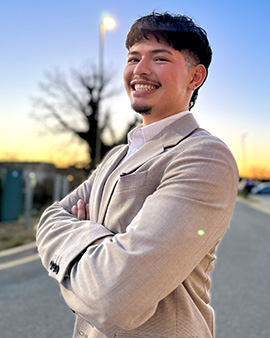 Life is all about community for fire protection engineering (FPE) senior Marlon Cruz. Born in the U.S., Cruz spent his first seven years living in his parents’ native Guatemala, and associates with this identity over any others. He is also proud to call Prince George’s County—and specifically Bladensburg, Maryland—home. With an abundance of Spanish speakers in the area, Cruz says he never felt like an outsider. Since age 18, he has served as a community liaison for Prince George’s County Council Chair Jolene Ivey to help make sure no one feels like an outsider. Cruz does translating for the council and runs many of its communications, including Ivey’s Instagram account.
Life is all about community for fire protection engineering (FPE) senior Marlon Cruz. Born in the U.S., Cruz spent his first seven years living in his parents’ native Guatemala, and associates with this identity over any others. He is also proud to call Prince George’s County—and specifically Bladensburg, Maryland—home. With an abundance of Spanish speakers in the area, Cruz says he never felt like an outsider. Since age 18, he has served as a community liaison for Prince George’s County Council Chair Jolene Ivey to help make sure no one feels like an outsider. Cruz does translating for the council and runs many of its communications, including Ivey’s Instagram account.
At the Clark School, Cruz was drawn to FPE for its reputation and excellent post-graduation hiring rate. He stayed for the “close-knit” community he says he wasn’t sure he’d find as a first-generation college student. One of his more memorable courses: a fire alarm design class taught by Professor Jim Milke ’76, M.S. ’81, Ph.D. ’91 (who retired in 2023 after more than 40 years of UMD service), the kind of professor who “takes the time to get to know his students,” says Cruz.
Before he graduates in December, Cruz is intent on paying forward his experiences to the next generation. At UMD, he is a ClarkLEADER and a member of the Society of Hispanic Professional Engineers. He is also launching his own social impact project as a fellow through the Do Good Accelerator: “Uniendo Voces Latinas: A Latino Political Empowerment Initiative” aims to increase political knowledge and political action within communities of Spanish-speaking individuals while expanding voter rights.
 A fascination with the unknown drives aerospace engineering sophomore Valentina Cruz to respond with curiosity to new challenges. “I’ve always been philosophical,” she says, wondering what life outside Earth’s orbit could be like. With dreams of serving as an astronaut one day, Cruz says aerospace engineering is “a good stepping stone.”
A fascination with the unknown drives aerospace engineering sophomore Valentina Cruz to respond with curiosity to new challenges. “I’ve always been philosophical,” she says, wondering what life outside Earth’s orbit could be like. With dreams of serving as an astronaut one day, Cruz says aerospace engineering is “a good stepping stone.”
She credits the LSAMP Bridge Program for introducing her to life on campus—both academic and social. Even before her first semester at UMD, she was making connections with Center for Minorities in Science and Engineering (CMSE) staff; Clark School professors, undergraduate tutors, and mentors; and new friends. Maryland Engineering’s “warm environment” made it easy for Cruz to learn about internships and scholarships, including the Maryland Space Grant Consortium Scholarship she received.
Often the only Latine-identifying person in her advanced high school courses, Cruz values the community she’s found at Maryland. She serves as treasurer for the university’s chapter of Hermandad de Sigma Iota Alpha, a multicultural sorority, and as the SHPEtinas Chair of the Society of Hispanic Professional Engineers (SHPE). Her plans for the year include focusing on professional development. Specifically, she’d like to invite accomplished women to take part in a leadership panel. Cruz is also interested in partnering with other campus entities, including the Women In Engineering Program, to put on workshops or events for her fellow SHPEtinas. “Sometimes I feel like we as women in engineering aren’t taken seriously. I want to empower women to be more competitive,” she says. Her advice for new students? “If you ever feel like you have imposter syndrome, I’m a great person to talk to.”
 A U.S. Air Force Veteran, first-generation college student, and father of four, Miguel Martinez ’24 took a less traditional path to the Clark School. After retiring from the Air Force in 2017, Martinez took his friends’ suggestions to pursue a culinary arts education. When the pandemic hit, the hospitality industry suffered, so the aircraft mechanic-turned-baker pivoted once more: He leveraged a veterans program to pursue a computer science education at Montgomery College. During his first semester, Martinez received an interesting email about the (then) brand new biocomputational engineering degree program at the Universities at Shady Grove. With a passing interest in biology and a mechanic’s sense of engineering and design, he transferred to the Clark School, setting his sights on receiving his bachelor’s degree.
A U.S. Air Force Veteran, first-generation college student, and father of four, Miguel Martinez ’24 took a less traditional path to the Clark School. After retiring from the Air Force in 2017, Martinez took his friends’ suggestions to pursue a culinary arts education. When the pandemic hit, the hospitality industry suffered, so the aircraft mechanic-turned-baker pivoted once more: He leveraged a veterans program to pursue a computer science education at Montgomery College. During his first semester, Martinez received an interesting email about the (then) brand new biocomputational engineering degree program at the Universities at Shady Grove. With a passing interest in biology and a mechanic’s sense of engineering and design, he transferred to the Clark School, setting his sights on receiving his bachelor’s degree.
Martinez especially enjoyed the machine learning aspects of the program and the application of his newfound computational knowledge to medical issues such as viral loads and cancer. He also found the program’s focus on image analysis—at the undergraduate level—“amazing.” Among the standout faculty instructors he encountered, Jared Callura made the biological elements “fun.” Callura also served as a mentor for Martinez, who was completely new to the process of applying and paying for graduate school. Among the first in his family to graduate with his bachelor’s degree, Martinez hopes to pay forward his experience by mentoring current students in the program.
Today, Martinez is pursuing a Ph.D. in biomedical engineering as a McKnight Doctoral Fellow at the University of Florida. Having secured a summer fellowship, he and his wife Hebeluz moved the family to Florida in June. Martinez has begun his research that applies a biocomputational biology lens to chronic myelomonocytic leukemia, an uncommon blood cancer, in the hopes of developing early detection methods or less-invasive therapeutics. Through his research, he honors his mother who died from cancer in 2009: “I’ll be the first in my family to be called ‘doctor,’” he says. “But I’m doing this for my family, to show them I can, and to provide for them the way I want to.”
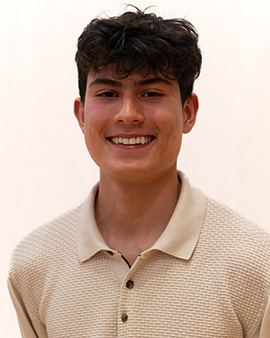 A trip to visit the Amazon Rainforest at age 9 sparked in Felipe Pinzon-Vanegas a lasting passion for the natural environment and sustainability. At UMD, the mechanical engineering senior has put that passion into action. His first year, he took UMD President Darryll J. Pines’ “The Grand Challenges of Our Time” course and was inspired to develop an environmental initiative for College Park. He calculated the number of trees it would take to offset the paper used by the university in a year. Then from September through May, he did outreach, fundraised, organized volunteers, worked with Tree-Plenish, and finally planted 100 trees in the neighborhoods surrounding campus. “Hearing Dr. Pines, CEOs, and other experts speak about their accomplishments inspired me to do something above average,” he says.
A trip to visit the Amazon Rainforest at age 9 sparked in Felipe Pinzon-Vanegas a lasting passion for the natural environment and sustainability. At UMD, the mechanical engineering senior has put that passion into action. His first year, he took UMD President Darryll J. Pines’ “The Grand Challenges of Our Time” course and was inspired to develop an environmental initiative for College Park. He calculated the number of trees it would take to offset the paper used by the university in a year. Then from September through May, he did outreach, fundraised, organized volunteers, worked with Tree-Plenish, and finally planted 100 trees in the neighborhoods surrounding campus. “Hearing Dr. Pines, CEOs, and other experts speak about their accomplishments inspired me to do something above average,” he says.
Going above, and beyond—literally—is a theme that has continued throughout Pinzon’s Clark School career. Junior year, he went on study abroad trips to Iceland to study sustainability and to Australia to study leadership. While abroad, he engaged in one of his favorite hobbies, making videos capturing the countries’ natural beauty. Now, he is using his talent for video as an intern at the Robert E. Fischell Institute for Biomedical Devices. He’s especially proud of a video featuring Kelly Yeung ’24, team lead of the department’s award-winning Capstone Design Expo project (a ventilation coach for opioid overdose bystanders). “I think it’s important to document things,” he says. “It’s helped me to show the impact that engineers are having.”
As vice president of corporate affairs for UMD’s chapter of the Society for Hispanic Professional Engineers (SHPE), Pinzon hopes to make a positive impact on his peers this year. He’s using what he learned in Australia to try and gain corporate sponsors, so SHPE can send more students to the national convention. “I feel proud to go and see all these Hispanic leaders in engineering. It inspires me a lot.” Looking forward to passing the torch after graduation, he says, “I hope I can inspire other Hispanics in the Clark School to take up this leadership role.”
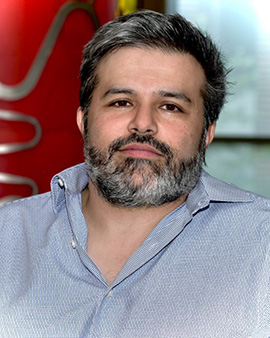 Fernando Raffan-Montoya M.S. ’08, Ph.D. ’16, an assistant professor of fire protection engineering (FPE), credits his English-language school in his native Colombia not only for preparing him for higher education abroad but also for instilling in him the idea that he was part of a global community. Excelling in math and physics and following his love of airplanes, he decided to study aeronautics for his undergraduate work and developed a love for research. While pursuing graduate studies in aerospace engineering at UMD, he landed an experimental research project funded by NASA working on thermal protection for a new rocket engine design. He had two advisers on the project—one from aerospace engineering and one from FPE. When he was presented with an opportunity to pursue postdoctoral research in FPE, he seized it. Raffan-Montoya notes that between the disciplines there is often overlap in theory, if not always application: “My brain is always trying to do multidisciplinary things,” he says.
Fernando Raffan-Montoya M.S. ’08, Ph.D. ’16, an assistant professor of fire protection engineering (FPE), credits his English-language school in his native Colombia not only for preparing him for higher education abroad but also for instilling in him the idea that he was part of a global community. Excelling in math and physics and following his love of airplanes, he decided to study aeronautics for his undergraduate work and developed a love for research. While pursuing graduate studies in aerospace engineering at UMD, he landed an experimental research project funded by NASA working on thermal protection for a new rocket engine design. He had two advisers on the project—one from aerospace engineering and one from FPE. When he was presented with an opportunity to pursue postdoctoral research in FPE, he seized it. Raffan-Montoya notes that between the disciplines there is often overlap in theory, if not always application: “My brain is always trying to do multidisciplinary things,” he says.
This interdisciplinary thinking helped Raffan-Montoya and a team of Clark School fire protection and aerospace engineers win a 2023 UMD Grand Challenges Grant for their project “Observing Wildfires Through UAVs and Fire Imaging Technologies.” The research is geared toward understanding wildfires and wildland-urban-interface fire behavior, an increasing problem worldwide, due in large part to climate change.
Nearly 20 years after arriving at the Clark School, Raffan-Montoya, who also co-directs the UMD fire testing laboratory FireTEC, is grateful for the opportunities and connections. He compares the FPE department to a family and has found the environment to be supportive for students, faculty, and staff alike: “I’ve been all three.” He says being bilingual has helped him learn to adapt to change and has broadened his research opportunities. “The fire science community is very global,” he says. “Being of two cultures allows me to be a little more flexible.”
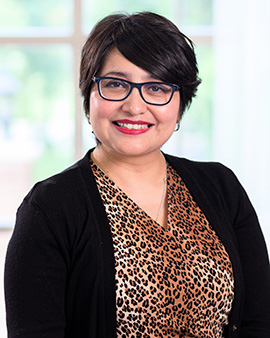 Originally from Mexico City, Marcela Ambar Shkolnik was introduced to chemical engineering by her father, a chemical engineering professor in Mexico. After living for many years in California, where she earned her bachelor’s degree in the discipline, Shkolnik moved to Maryland in 2016. Serving as a senior accreditation officer and lead assessor at A2LA (American Association for Laboratory Accreditation) headquartered in Frederick, Maryland, Shkolnik added ‘part-time graduate student’ to her resume in 2023.
Originally from Mexico City, Marcela Ambar Shkolnik was introduced to chemical engineering by her father, a chemical engineering professor in Mexico. After living for many years in California, where she earned her bachelor’s degree in the discipline, Shkolnik moved to Maryland in 2016. Serving as a senior accreditation officer and lead assessor at A2LA (American Association for Laboratory Accreditation) headquartered in Frederick, Maryland, Shkolnik added ‘part-time graduate student’ to her resume in 2023.
It’s a balancing act, says the first-year master’s student in the Department of Chemical and Biomolecular Engineering, but it’s a challenge worth pursuing. She especially enjoys her work helping to launch the new research lab of Juan Carlos Vega-Vila, an assistant professor who joined the department in 2023. Shkolnik is most interested in Vega-Vila’s work with zeolites, a crystalline mineral formed by volcano byproducts that can exhibit catalytic and absorbent properties. Producing zeolitic materials in the lab, and scaling them up for industry, is a project that excites Shkolnik. “It’s pure chemical engineering,” she says, with “possible applications that could contribute to new, green ways of producing materials that are necessary for daily life—from laundry detergent to petroleum.”
Using knowledge gleaned from her undergraduate work and from her work in quality control for A2LA, Shkolnik is excited to start “from scratch” in a brand new lab. She calls Vega-Vila a great teacher, adept at breaking down even the most complex ideas into manageable concepts. She also attests to the benefits that being Latina in the U.S. gives her. “It has helped being bilingual,” she says. “But being of two cultures also grants you a better understanding in general."
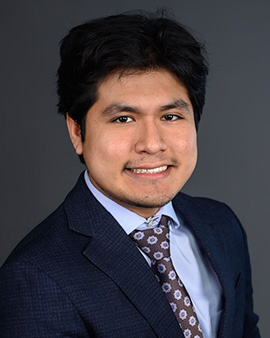 A second-year graduate student in the Department of Materials Science and Engineering (MSE), Leopoldo Jose Tapia-Aracayo has always been fascinated by details on the nanoscale, and could often be found looking through a microscope as a kid. He was also interested in building and architecture. Those interests transferred well to his undergraduate studies in physics and his graduate studies in materials science and engineering at the Clark School. Born in Peru and raised in Lexington, Kentucky, Tapia-Aracayo says being a first-generation college student “saved” him from pre-set expectations as to how graduate school should work. From applying to graduate school immediately after undergrad to going from a small college to a large research university far from home, he says “taking risks” has worked out for him. “I’m grateful for the opportunities and support I’ve had along the way.”
A second-year graduate student in the Department of Materials Science and Engineering (MSE), Leopoldo Jose Tapia-Aracayo has always been fascinated by details on the nanoscale, and could often be found looking through a microscope as a kid. He was also interested in building and architecture. Those interests transferred well to his undergraduate studies in physics and his graduate studies in materials science and engineering at the Clark School. Born in Peru and raised in Lexington, Kentucky, Tapia-Aracayo says being a first-generation college student “saved” him from pre-set expectations as to how graduate school should work. From applying to graduate school immediately after undergrad to going from a small college to a large research university far from home, he says “taking risks” has worked out for him. “I’m grateful for the opportunities and support I’ve had along the way.”
In addition to his MSE coursework, the Clark Scholar works in Distinguished University Professor Gary Rubloff’s research group for the study of solid-state batteries. At just nanometers in size, solid-state battery applications include EVs, smart phones, photovoltaics, and medical devices and can be safer, more economical, and eco-friendlier than traditional batteries. Tapia-Aracayo’s work involves fabricating and processing platform devices to measure and understand fundamental properties in materials used in the solid-state batteries—even novel or yet-to-be-discovered materials. He’s also trained undergraduate students working with him to do the same. Now, Tapia-Aracayo is ready to start compiling his hard work into a paper for publication. “I’m pretty excited for it,” he says.
Tapia-Aracayo has connected with other graduate students at Clark Scholars and Engineering Graduate Student Society events. He is the media person for the Materials Science and Engineering Graduate Society and in the spring semester, he will serve as a teaching and lab assistant for a microprocessing course. Off campus, he plans to continue his newfound hobbies of rock-climbing, exploring bike trails, and swing dancing, “great stress relievers and community-builders,” he says.
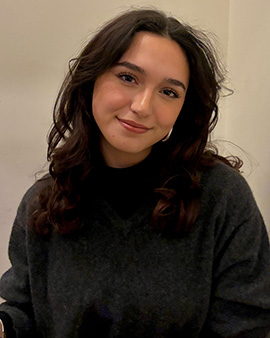 Born in Chile to a large extended family, senior bioengineering major and math minor Trinidad “Trini” Cubillos Valdes feels grateful to have found a close-knit community at UMD. Beginning as a member of the Honors Global Challenges & Solutions program, Cubillos Valdes, for whom English is her second language, made close connections with other students from international backgrounds. At the Clark School, she joined the Society of Hispanic Professional Engineers (SHPE)—she now serves as vice president for internal affairs—and developed close friendships with other Spanish speakers. Beyond sharing engineering and the Spanish language, she says these friendships have allowed for a deeper connection: “Many of us share a similar, family-first culture.”
Born in Chile to a large extended family, senior bioengineering major and math minor Trinidad “Trini” Cubillos Valdes feels grateful to have found a close-knit community at UMD. Beginning as a member of the Honors Global Challenges & Solutions program, Cubillos Valdes, for whom English is her second language, made close connections with other students from international backgrounds. At the Clark School, she joined the Society of Hispanic Professional Engineers (SHPE)—she now serves as vice president for internal affairs—and developed close friendships with other Spanish speakers. Beyond sharing engineering and the Spanish language, she says these friendships have allowed for a deeper connection: “Many of us share a similar, family-first culture.”
In addition to her coursework on the biotechnology and therapeutics engineering track, Cubillos Valdes is proud of her involvement with the UMaryland iGEM (international genetically engineering machine) team. The student-led group conducts research within synthetic biology and genetic engineering and then presents their project at an annual worldwide showcase. The team’s research project aims to improve access to pre-cervical cancer testing for people in low- and middle-income countries with a less invasive—but accurate—test, much like a home pregnancy test. “I really love the therapeutics side of bioengineering and might want to work in pharmaceuticals,” says Cubillos Valdes.
In her last year at the Clark School, she is paying forward her opportunities by serving as a ClarkLEADER. With plans to return to Chile upon graduation, Cubillos Valdes hopes to pursue a master’s degree in bioengineering. At the notion of returning to the sights, sounds, food, and family in Santiago, she says, “I’m excited for it.”
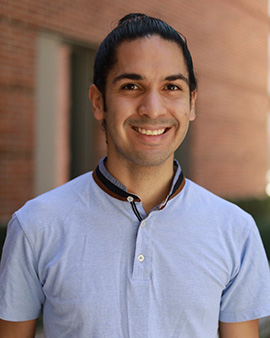 Two teachers—his mother Isabel Vila Martínez, and his middle school math teacher Carlos Juan Morales Cabrera—inspired Assistant Professor Juan Carlos Vega-Vila to become the engineer and educator he is today. Their support and motivation, combined with Vega-Vila’s passion for math and chemistry, led him to pursue a chemical engineering education—first in his native Puerto Rico and then on the mainland. With a focus on developing sustainable technologies for the chemical processing of carbon dioxide, Vega-Vila hopes to make a strong contribution to his home that gave him so much.
Two teachers—his mother Isabel Vila Martínez, and his middle school math teacher Carlos Juan Morales Cabrera—inspired Assistant Professor Juan Carlos Vega-Vila to become the engineer and educator he is today. Their support and motivation, combined with Vega-Vila’s passion for math and chemistry, led him to pursue a chemical engineering education—first in his native Puerto Rico and then on the mainland. With a focus on developing sustainable technologies for the chemical processing of carbon dioxide, Vega-Vila hopes to make a strong contribution to his home that gave him so much.
Vega-Vila was attracted to UMD in part because of its welcoming campus community. He is especially interested in increasing outreach efforts to local youth, to ensure anyone can pursue an engineering degree learn what it takes to develop engineering solutions to address society's greatest challenges. “Varied backgrounds are incredibly essential, in engineering and in life,” he says. “Groups of people need different perspectives to thrive.”
Having joined the Clark School in 2023, his research program at the intersection of material synthesis and catalysis and reaction engineering fundamentals will be underway in 2024. He brings high-energy positivity to the classroom (“It makes a tremendous difference,” he says) and to his lab. Busy training its first cohort of graduate students in research, communications, and presentation skills, Vega-Vila is committed to mentorship. “The students are not a means to an end,” he says. “They are the end. If my students are successful, I’m successful.”
Meet more members of our community.
- Asian, Pacific Islander, and Desi American (APIDA) Heritage Month 2024
- Women’s History Month 2024
- Black History Month 2024
Published September 16, 2024
